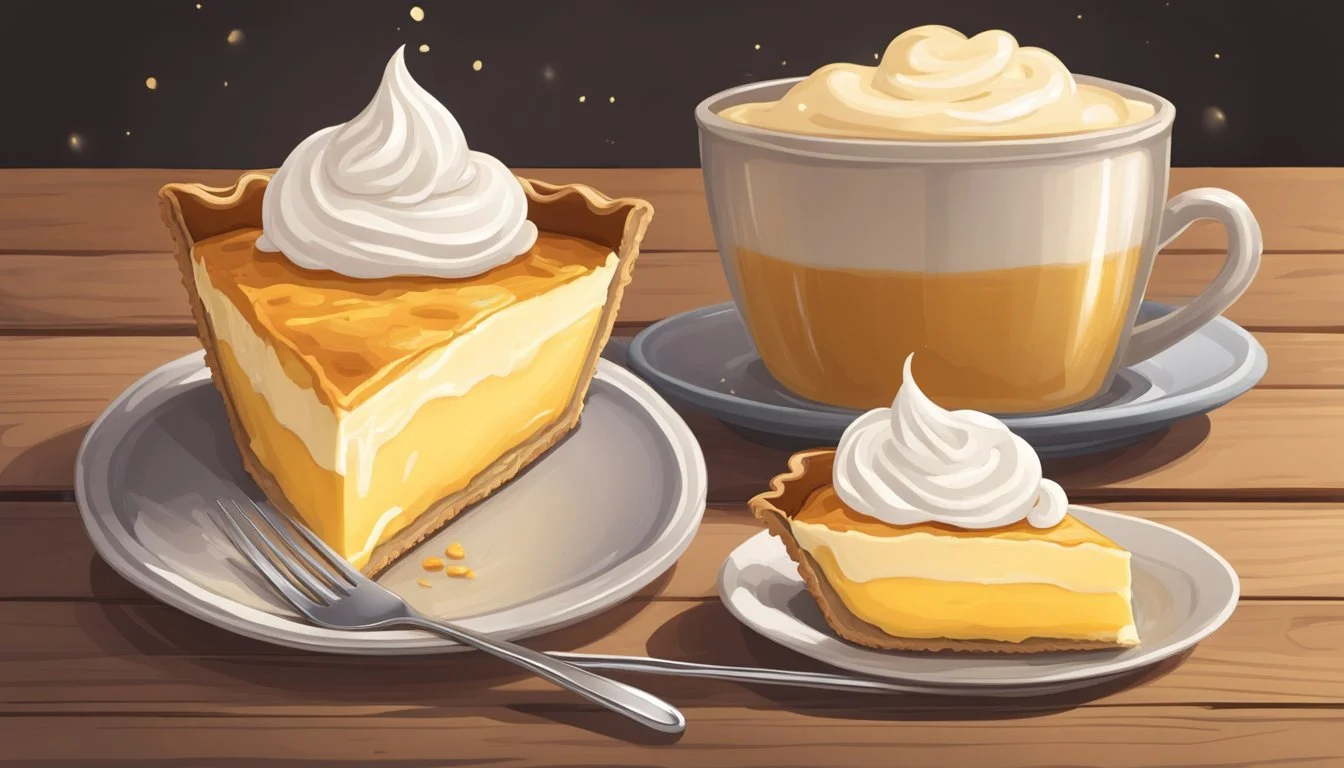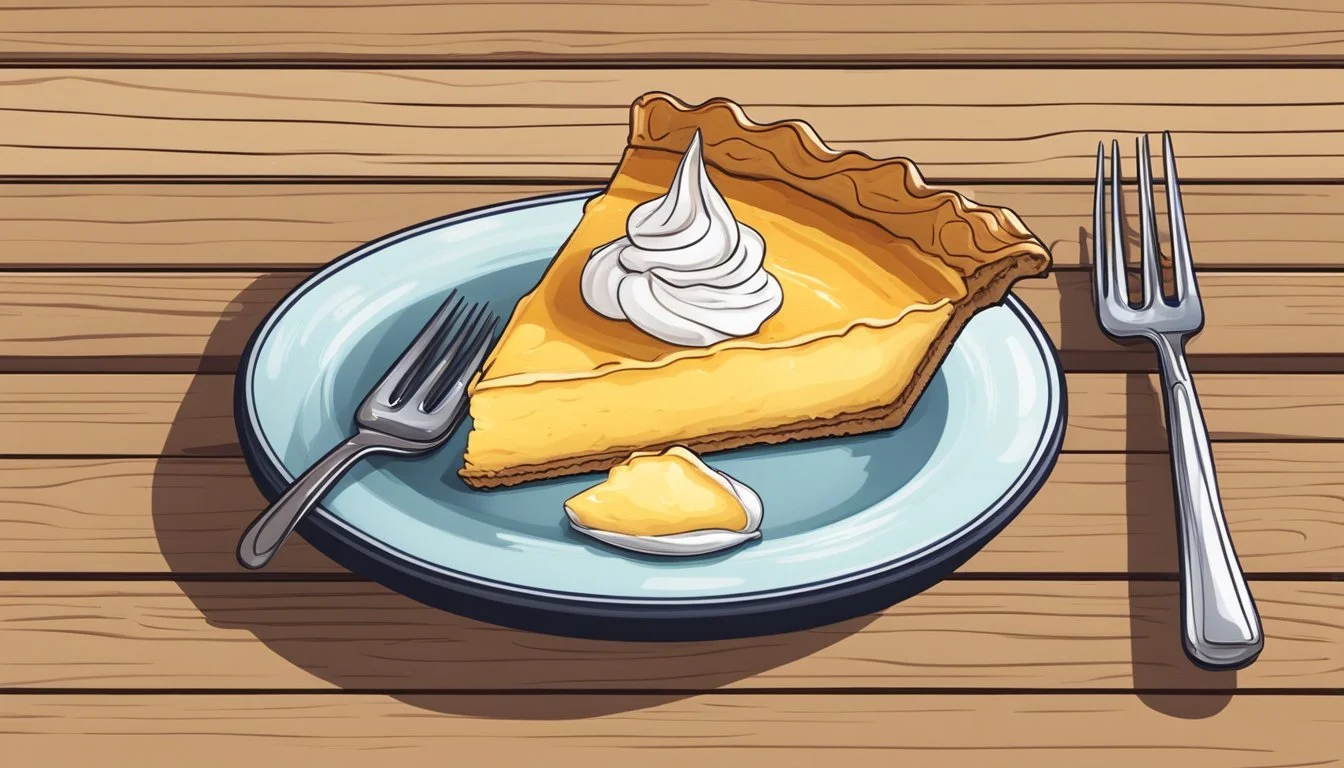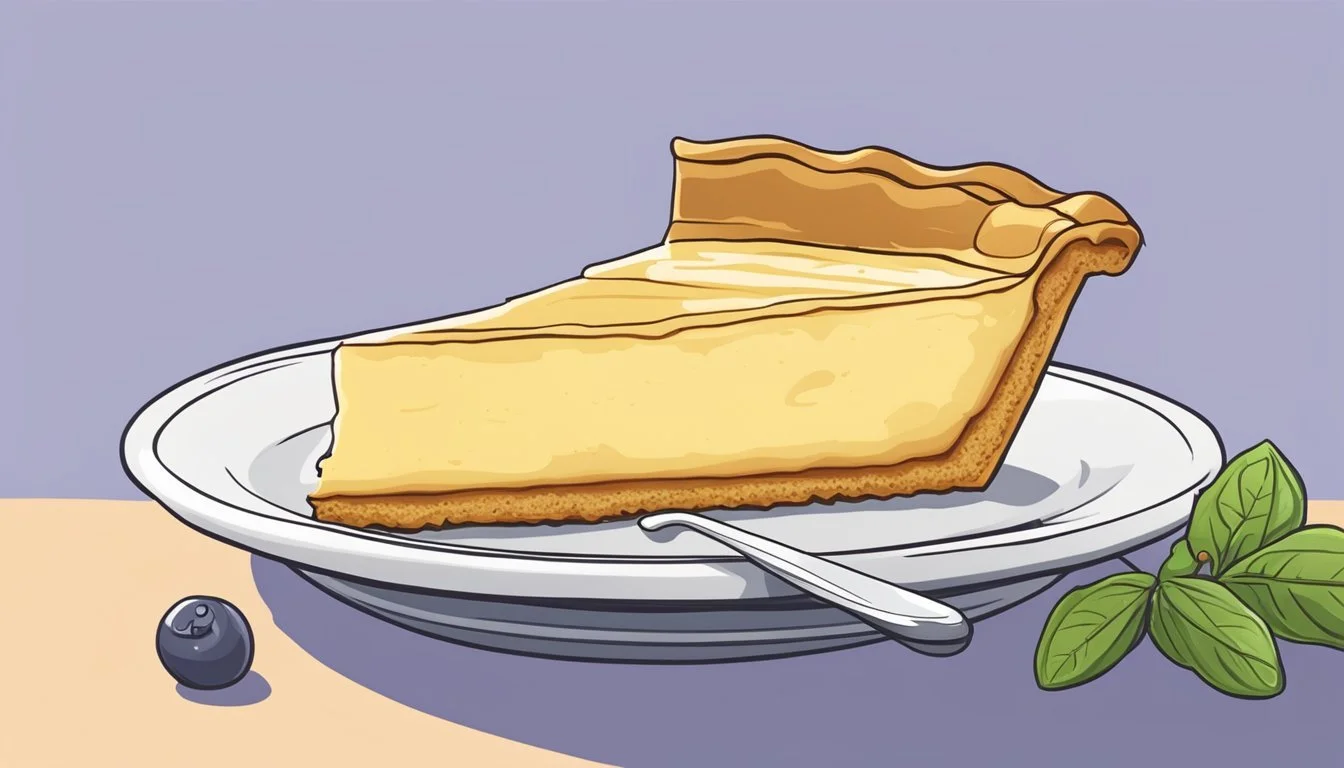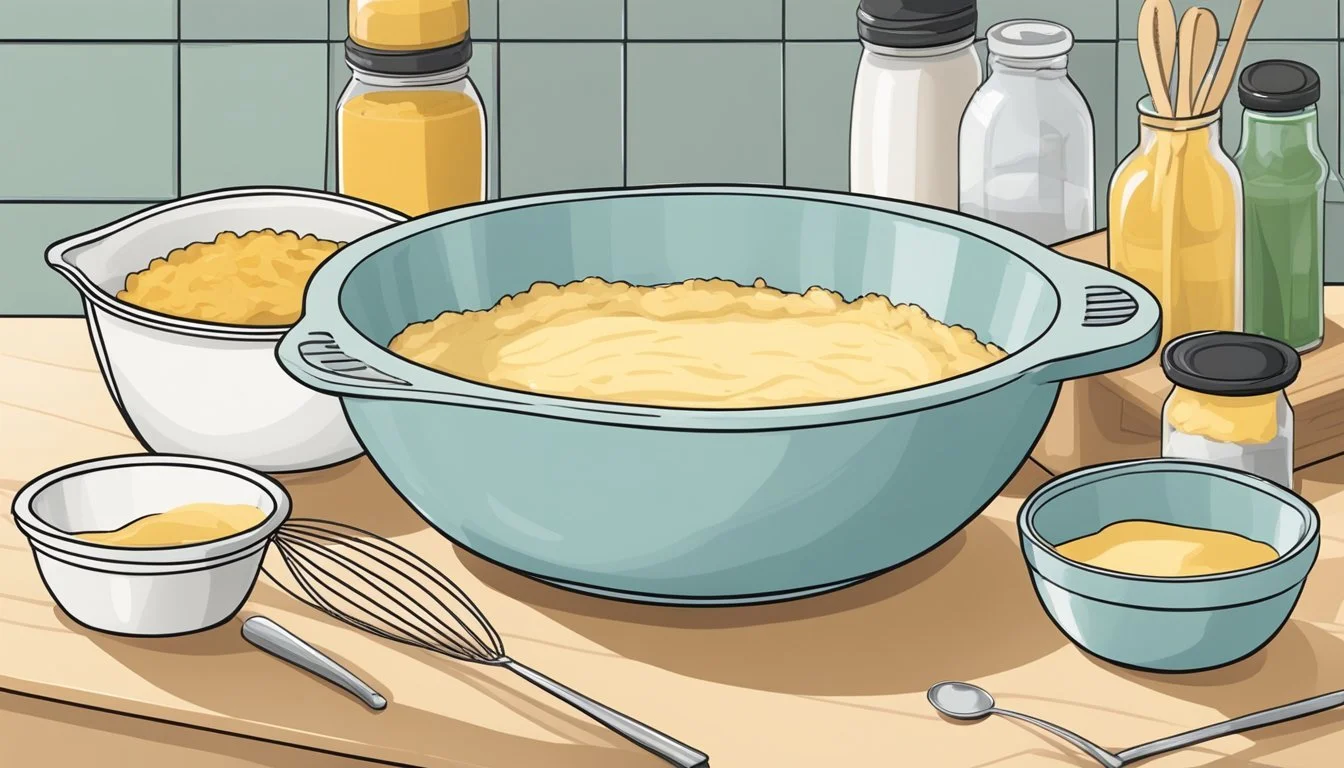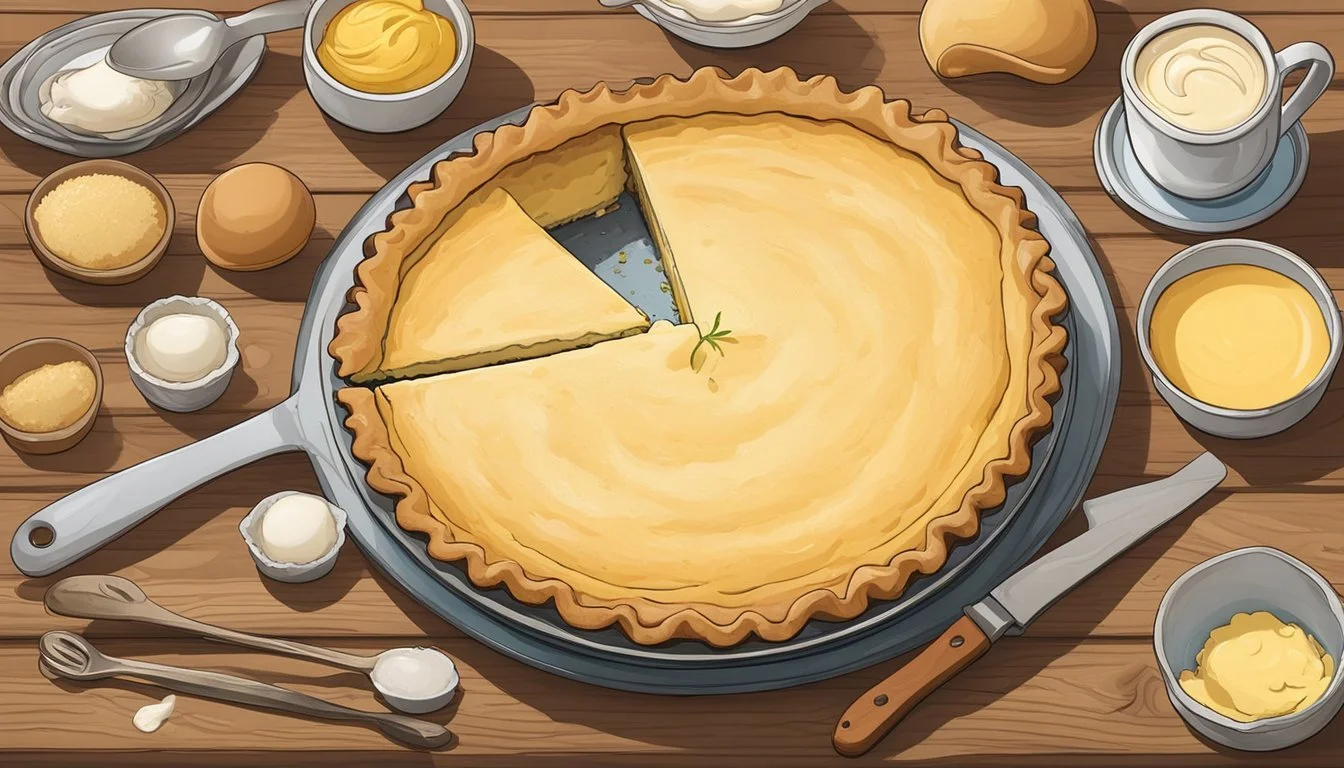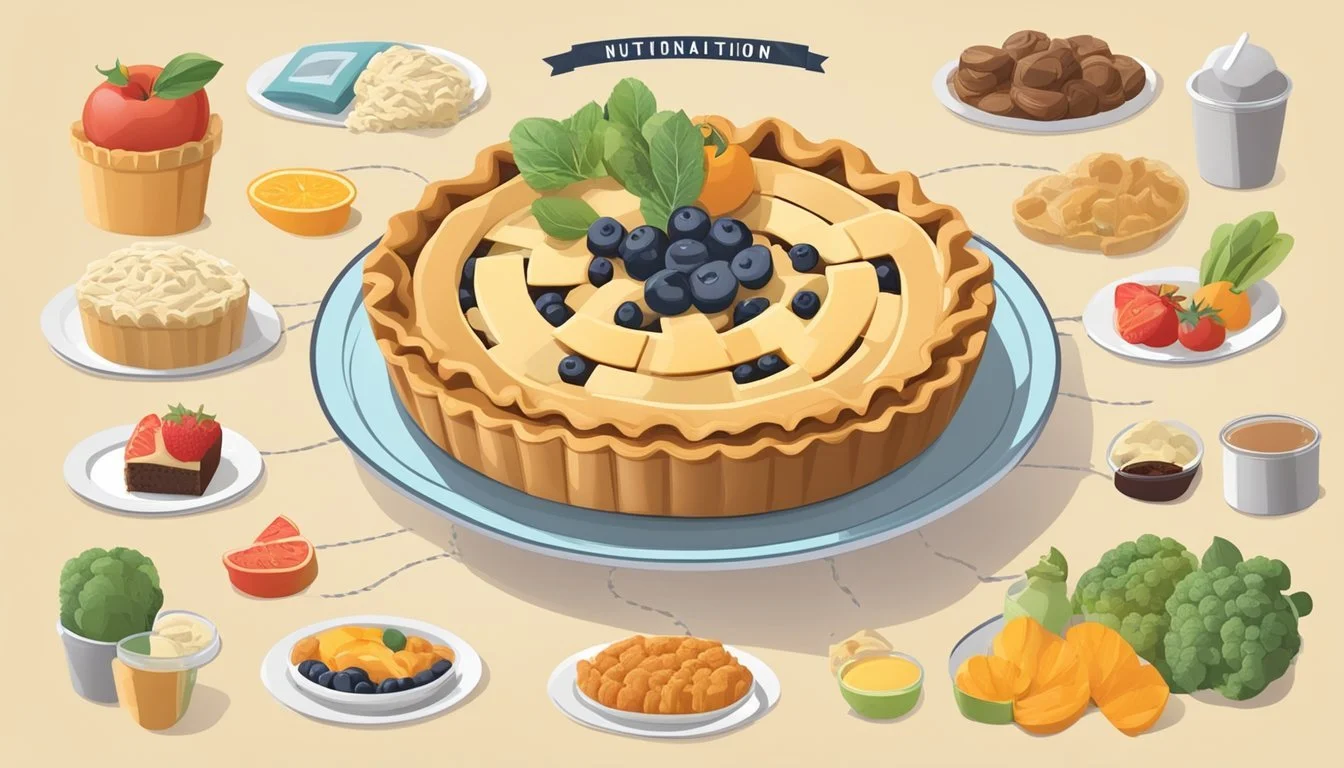Is Buttermilk Pie Vegan?
Unveiling Dairy-Free Dessert Options
Buttermilk pie, a classic Southern dessert, traditionally features a custard filling made with buttermilk, butter, eggs, and sugar, encased in a flaky pastry crust. Its creamy texture and tangy-sweet flavor profile have made it a comfort food favorite, often gracing tables at family gatherings and celebratory events. However, this indulgent treat typically contains animal-derived ingredients, which are not in line with a vegan diet.
The vegan community has creatively reimagined many non-vegan dishes, including buttermilk pie. The challenge lies in replicating the pie's distinct flavor and texture without using buttermilk, eggs, or butter—all key components that are not vegan-friendly. Plant-based versions of buttermilk pie utilize alternatives such as vegan butter substitutes, plant-based milk soured with an acid to mimic buttermilk, and egg replacers to achieve a similar custard consistency without any animal products.
Despite these adaptations, it is important to note that the term "buttermilk pie" often still implies the inclusion of dairy buttermilk and other non-vegan ingredients unless clearly specified as vegan. Therefore, individuals following a vegan diet typically need to confirm the ingredients of a buttermilk pie or seek out recipes that are expressly labeled as vegan to ensure they align with their dietary choices.
What is Buttermilk Pie?
Buttermilk pie is a classic dessert stemming from Southern cuisine. It is a type of custard pie that is known for its smooth, creamy texture and slightly tangy flavor, which comes from the primary ingredient, buttermilk. Historically, it has been a way to use up leftover buttermilk in the southern United States.
The basic ingredients that make up the filling of buttermilk pie include:
Buttermilk: Provides the characteristic tangy taste.
Sugar: For sweetness and to help the custard set.
Eggs: Essential for the custard structure.
Butter: Adds richness and aids in the smooth texture.
Common additional flavorings include:
Lemon juice: Introduces a subtle, citrusy brightness.
Vanilla extract: Offers a base sweet flavor.
Nutmeg or other spices: Enhance the overall taste profile.
During preparation, the filling is usually mixed until smooth and then poured into a pie crust. After baking, the pie sets into a custard-like consistency—firm yet tender. It’s often enjoyed either slightly warm or cool, with its creamy texture contrasting pleasantly with the flaky crust.
Although traditionally not a vegan dessert due to the dairy and eggs used, contemporary recipes may substitute plant-based ingredients to mimic the classic flavors, accommodating vegan dietary preferences. Vegan buttermilk can be made using non-dairy milk and vinegar or lemon juice to achieve the requisite tartness.
In essence, buttermilk pie is a beloved Southern recipe that balances sweetness with a trademark tang, packaged in a creamy custard form.
Understanding Veganism
Veganism is a dietary and lifestyle choice where individuals abstain from all animal products. This commitment extends beyond diet into avoiding animal-derived materials and products tested on animals. Within the context of food, the emphasis is on plant-based ingredients.
Defining Vegan Food
Vegan food constitutes ingredients and dishes that contain no animal products, including meat, dairy, eggs, and honey. Central to a vegan diet are fruits, vegetables, legumes, grains, nuts, and seeds. When preparing vegan meals, one substitutes animal-based items with plant-derived alternatives. For instance, vegan butter is often used in place of traditional dairy butter, and is made from plant oils. Dairy-free milks—such as almond, oat, soy, and coconut—are common in vegan diets, used both as a beverage and in recipes requiring milk.
Common Non-Vegan Ingredients
The following is a list of ingredients commonly found in non-vegan diets, particularly in desserts like buttermilk pie:
Dairy: Milk, cheese, butter, and cream are derived from animals and thus not vegan.
Eggs: Often used in baking and as binders, eggs are excluded from vegan recipes.
Honey: Produced by bees, honey is not considered vegan by many in the community.
These ingredients are frequently replaced with vegan alternatives. For example, in place of eggs, flaxseeds or chia seeds mixed with water can provide a similar binding effect in baking. Veganism requires careful consideration and knowledge of ingredients to ensure adherence to its principles.
Analysing Buttermilk Pie Ingredients
This section offers a detailed examination of the key components that make up the quintessential buttermilk pie, exploring the traditional and alternative ingredients involved.
The Role of Buttermilk
Buttermilk serves as the cornerstone of the classic buttermilk pie, imparting a tangy and rich flavor that is both distinctive and desired. Traditionally, buttermilk is a byproduct of butter-making, though in a modern context it is more commonly a cultured dairy product. Its acidity lends itself to a tender crumb in baked goods and is a crucial ingredient for the custard filling's texture.
Examining the Traditional Pie Crust
The traditional pie crust, a base for many pies, typically consists of flour, fat (often butter), sugar, and salt. For a buttermilk pie, the crust should be flaky and serve as a complementary vessel for the rich filling. This involves baking the pie crust until partially cooked (blind baking) to ensure a crisp finish.
Ingredients for pie crust:
Flour: Provides structure
Butter: Offers a buttery richness and flakiness
Sugar: Adds a hint of sweetness
Salt: Enhances flavor
Common Fillings and Their Ingredients
The filling for a traditional buttermilk pie is simple yet indulgent, usually calling for sugar, eggs, buttermilk, and sometimes flavorings like lemon juice or vanilla extract. The sugar and eggs create a custard base, which becomes velvety and rich upon baking.
Typical filling ingredients:
Eggs: Act as a binding agent
Sugar: Sweetens the pie
Buttermilk: Adds creaminess and tang
Flour (sometimes): Helps to thicken the filling
Each ingredient plays a role in achieving the classic buttermilk pie's signature taste and texture, from the buttery crust to the tangy and sweet custard filling.
Creating a Vegan Buttermilk Pie
Crafting a vegan buttermilk pie involves sourcing plant-based alternatives to traditional ingredients, such as dairy-based buttermilk, butter, and eggs. Here, one can discover how to make such substitutions to create a dessert that aligns with vegan dietary preferences.
Vegan Buttermilk Alternatives
Vegan buttermilk is easily made by adding an acid such as lemon juice or apple cider vinegar to a non-dairy milk. For every cup of non-dairy milk, typically soy, almond, or oat milk, one should mix in 1 tablespoon of the acidic substance. Allow the mixture to sit for about 5 minutes to achieve the desired curdled texture.
Ingredients for Vegan Buttermilk:
1 cup non-dairy milk (e.g., soy, almond, oat)
1 tablespoon lemon juice or apple cider vinegar
Vegan Pie Crust Essentials
A vegan pie crust can be made using all-purpose flour, vegan butter, and a bit of salt. The key to a flaky texture is keeping the vegan butter cold and not overworking the dough. Some recipes also suggest using coconut oil as a substitute for butter to provide a rich, flaky base for the pie.
Basic Vegan Pie Crust Ingredients:
2 cups all-purpose flour
1 cup vegan butter, cold and cubed
¼ teaspoon salt
Cold water, as needed to bind the dough
Vegan-Friendly Sweeteners
Traditional buttermilk pie recipes often call for white sugar, but to ensure that the pie is vegan, one must verify that the sweetener used does not undergo refining processes that involve bone char. Alternatives like organic cane sugar, maple syrup, or agave nectar are safe vegan options. The choice of sweetener can also affect the flavor profile, giving the pie a subtle variance in taste.
Vegan Sweetener Options:
Organic cane sugar
Maple syrup
Agave nectar
To serve, a dollop of coconut whipped cream can be the perfect complement to the rich custard of a vegan buttermilk pie, providing a light and creamy finish.
Step-by-Step Vegan Buttermilk Pie Recipe
Creating a vegan buttermilk pie involves preparing a plant-based pie dough and a dairy-free filling with careful measurements to ensure proper consistency and flavor.
Preparing the Vegan Pie Dough
They should begin by mixing 2 1/2 cups of all-purpose flour, 1 tablespoon of granulated sugar, and 1 teaspoon of salt in a large bowl. Then, they need to cut in 3/4 cup of chilled vegan butter until the mixture resembles coarse crumbs. Gradually add 4-6 tablespoons of ice water, just until the dough comes together.
They should then:
Shape the dough into a disk and wrap it in parchment paper.
Chill in the fridge for at least 1 hour.
Once chilled, roll out the dough on a floured surface to fit a 9-inch pie pan.
Transfer the rolled dough to the pie pan and trim excess edges.
Use pie weights or dried beans on top of parchment paper to fill the dough for blind baking.
Preheat the oven to 375 degrees F.
Bake the crust for approximately 20 minutes, then remove the weights and bake for another 15 minutes until the crust is golden brown.
Let it cool while preparing the filling.
Mixing the Vegan Filling
For the filling, they should whisk together 1/2 cup of melted vegan butter, 1 cup of granulated sugar, 2 tablespoons of flour, 2 teaspoons of vanilla extract, and a pinch of salt in a bowl. Furthermore, they should stir in the vegan egg replacer equivalent to 2 eggs, prepared according to package instructions. To create the vegan buttermilk, mix 1 cup of soy milk with 1 tablespoon of lemon juice or vinegar and allow it to sit until it slightly curdles.
To complete the filling, they need to:
Blend the vegan buttermilk into the sugar and butter mixture until smooth.
Pour the filling into the pre-baked crust, smoothing the top with a spatula.
Place the pie plate on a baking sheet to catch any drips.
Bake in the preheated oven at 350 degrees F for 45-50 minutes until the filling is set.
Cool the pie completely before slicing.
This pie can be stored in the fridge and is best served chilled. It can also be frozen, tightly wrapped, for up to 3 months.
Baking Tips and Techniques
In the endeavor to make a delightful vegan buttermilk pie, focusing on constructing the pie crust and perfecting the custard filling ensures success.
Achieving the Perfect Crust
The foundation of any pie is its crust, which should be flaky and tender. One begins with a blend of flour and solid fat, typically vegan butter or shortening. It’s crucial that the fat is cold; thus, you could cube it and place it in the freezer for a brief period beforehand. Use a food processor to pulse the fat into the flour until pea-sized crumbles are visible. Dribble in ice water just until the dough comes together.
Next, transfer the dough onto a lightly floured surface, and roll out to the desired thickness, typically about 1/4 inch. With a rolling pin, create an even layer, and then transfer it to your pie dish. Crimp the edges to create a decorative border, which also helps to hold the shape during baking. Chill the crust in the freezer for about 15 minutes before you par-bake it, which will help to maintain a flaky texture and prevent it from shrinking.
Baking the Perfect Vegan Custard
The custard is the heart of a buttermilk pie. To craft a vegan version, one substitutes traditional buttermilk with a plant-based milk, acidified with lemon juice or vinegar to mimic the tart flavor. Thickeners like cornstarch or a vegan egg replacer can be used to achieve the desired consistency.
When mixing, whip the vegan butter and sugar until creamy before slowly integrating the vegan buttermilk and thickeners. For an evenly cooked custard, ensure that the oven is preheated to the right temperature, typically at 350°F. Pour the mixture into the par-baked crust and place on a baking sheet to catch any drips. Bake until the custard sets but still has a slight jiggle in the center to avoid overcooking.
Customizing Your Vegan Buttermilk Pie
Creating a vegan buttermilk pie allows for a variety of customizations tailored to personal taste preferences. From the selection of sweeteners to the final touches with garnishes, these modifications can take the classic comfort dessert to new heights of flavor while maintaining its plant-based integrity.
Alternative Vegan Sweeteners and Flavors
When it comes to sweeteners in a vegan buttermilk pie, traditional granulated sugar can be replaced with alternative options. Agave syrup and maple syrup are popular choices, each adding its own distinct taste. In terms of flavors, substituting vanilla with almond extract can provide an aromatic twist, while a dash of lemon zest and cinnamon can enhance the pie with a warm citrusy zing.
Sweetener Options:
Agave syrup
Maple syrup
Flavor Additions:
Almond extract
Lemon zest
Cinnamon
For those wanting to venture beyond the classic, incorporating other pie elements such as sweet potato or pecan can introduce the depth and richness often found in these traditional desserts.
Toppings and Garnishes for Vegan Pies
Once the pie is baked, the choice of toppings and garnishes adds both visual appeal and layers of flavor. A dollop of vegan whipped cream can provide a creamy contrast to the pie's sweetness. For a fruitier taste, scattering fresh blueberries or other fresh fruit on top just before serving adds a juicy burst of freshness.
Toppings:
Vegan whipped cream
Fresh blueberries
Fresh fruit options
These elements ensure that each vegan buttermilk pie is not only a representation of ethical eating but also a canvas for culinary creativity.
Storing and Serving Vegan Buttermilk Pie
Proper storage extends the life of a vegan buttermilk pie, ensuring it retains its flavor and texture, while serving it correctly can enhance the dining experience. Here are some effective methods for refrigerating and freezing the pie, as well as tips to present it attractively when serving.
Refrigeration and Freezing Tips
After enjoying a slice of vegan buttermilk pie, storing the leftovers properly is crucial. The pie should be cooled to room temperature before being placed in the refrigerator. To refrigerate, cover the pie lightly with plastic wrap and ensure that it's sealed to prevent absorption of other fridge odors. Typically, the pie can be stored this way for up to 4 days.
For longer storage, freezing is a viable option. Slice the cooled pie and wrap each piece individually in plastic wrap, then again in aluminum foil. Place the wrapped slices in a freezer-safe container or sealable plastic bag. Frozen vegan buttermilk pie can last up to three months. When ready to eat, defrost the pie in the fridge and allow it to reach refrigerator temperature before serving.
Serving Suggestions
When serving vegan buttermilk pie, one should consider the setting—whether it's a family gathering, lunch, or dinner event. Vegan buttermilk pie should be served chilled, which makes it a refreshing dessert option. Portioning the pie is best done with a sharp knife to ensure clean slices.
For a casual family lunch, serve the pie with a dollop of dairy-free whipped cream or a sprinkle of fresh berries.
In a more formal dinner setting, plate the pie alongside a scoop of vegan ice cream and a drizzle of caramel sauce for an elegant dessert course.
To enhance the presentation, garnish each serving with a sprig of mint or a dusting of powdered sugar, if desired. It's important to note that the serving suggestions might differ based on personal preferences and dietary requirements.
Nutritional Information
Traditional buttermilk pie is not a vegan dish, as it customarily contains eggs, butter, and buttermilk—all animal-derived ingredients. For those on a vegan diet, it's important to consider these components when assessing a pie's nutritional content.
Vegan adaptations of buttermilk pie replace these ingredients with plant-based alternatives. In a classic recipe, high-calorie ingredients like eggs and butter contribute significantly to the total calorie count. A typical slice of traditional buttermilk pie can have approximately 300-500 calories, depending on the size of the slice and specific recipe.
A vegan buttermilk pie might use ingredients such as vegan butter and plant-based milk with vinegar or lemon juice to replicate buttermilk. These substitutes generally have lower saturated fat content, contributing to a potentially lower calorie and lower fat profile. However, nutritional variance depends on the specific vegan alternatives used.
Below is a general comparison of key nutritional aspects between traditional and vegan buttermilk pies:
Nutrient Traditional Buttermilk Pie Vegan Buttermilk Pie Calories High Moderate to High Total Fat Higher Lower Saturated Fat Higher Lower Dietary Fiber Low Dependent on ingredients Sugar High High to Moderate
Despite the changes in fat content, both versions typically contain high levels of sugar, providing ample calories and affecting their categorization as healthy options. It's essential for individuals adhering to a low-fat or healthy diet to be mindful of the nutritional content, particularly the sugar and fat levels, even in plant-based versions. Consumers looking for nutritional benefits should review the specifics of each ingredient in the vegan recipe to ensure alignment with their dietary goals.
Troubleshooting Common Vegan Pie Issues
In vegan baking, precision is crucial, and correcting common issues with pie crusts and fillings can make the difference between disappointment and a delicious outcome.
Crust and Baking Issues
Toughness: A common complaint is a tough pie crust, which often results from too little fat or overworking the dough. To prevent this, one must adhere to the recipe’s fat-to-flour ratio and handle the dough minimally—just enough to form a cohesive ball.
Shrinking: If the crust shrinks during baking, it may be because the dough hasn't rested enough. Allowing the dough to rest in the refrigerator before rolling it out and again before baking can help the gluten relax and minimize shrinkage.
Par-baking: Some recipes call for a par-baked crust, which involves partially cooking the dough before adding the filling. Bake at 350°F for 15–20 minutes, or until the edges brown slightly. Removing weights after 10 minutes helps prevent a soggy bottom.
Freezing: For those preparing crusts in advance, freezing is a viable option. A vegan pie crust can be frozen either raw or par-baked. Ensure the crust is wrapped tightly to prevent freezer burn and thaw it fully before completing the baking process.
Filling Consistency Problems
Runniness: Vegan pie fillings sometimes fail to set properly, resulting in a runny consistency. This problem can be mitigated by making sure the thickening agent, like cornstarch or arrowroot powder, is measured accurately and given enough time to cook and set.
Texture: Achieving the desired texture in vegan fillings can be challenging due to the absence of eggs, which traditionally provide structure. To replicate this, one can experiment with silken tofu, non-dairy yogurts, or agar-agar to find the right consistency that mimics the custard-like feel of traditional buttermilk pie.
Alternatives to Vegan Buttermilk Pie
Traditional buttermilk pie, with its rich custard filling, is not vegan, but there are vegan alternatives that maintain the delightful experience of classic pies. These vegan options explore the mouth-watering array of traditional pies and custards without any animal products.
Other Traditional Pies Made Vegan
Chess Pie: The sweet, dense filling of a chess pie can be made vegan by substituting dairy and eggs with ingredients like silken tofu, plant-based milk, and vegan butters.
Sugar Cream Pie: A simple mixture of sugar, cornstarch, and plant-based creams can create a vegan version of this classic custard-style pie without compromising on its creamy texture.
Pumpkin Pie: Vegan pumpkin pie is easily achieved by using almond or soy milk mixed with pumpkin puree and traditional pumpkin pie spices. Agar agar or arrowroot powder can serve as thickening agents.
Sweet Potato Pie: Similar to pumpkin pie, sweet potatoes provide a natural creaminess and, when combined with plant-based milk and vegan sweeteners, create an indulgent vegan dessert.
Exploring Dairy-Free Custards
Pot Pie: Traditionally savory, pot pies can be made vegan with a creamy, dairy-free custard filling composed of plant-based milk thickened with flour or starch, mixed with an assortment of vegetables and vegan protein.
Custard Pie: A classic custard pie can be created without dairy by mixing plant-based milk, such as coconut or almond, with a starch-based thickener and a vegan sweetener, flavored with vanilla or other extracts.
Conclusion
Traditional buttermilk pie is not vegan due to its reliance on buttermilk and eggs. However, innovative recipes allow families to enjoy this dessert during holidays and festivities, with ingredients that fit a vegan diet. The transformation of a classic buttermilk pie into a vegan-friendly version involves using plant-based milk—such as almond or coconut milk—combined with an acid like vinegar or lemon juice to mimic the curdling effect and tanginess of buttermilk.
Vegan Substitutes:
Milk: Soy, almond, or coconut milk
Butter: Vegan butter or margarine
Eggs: Vegan egg replacers (commercial blends, aquafaba, flax or chia seeds)
Preparing a vegan buttermilk pie is straightforward. One should first blend the egg substitute with sugar until creamy. Next, they need to incorporate the vegan buttermilk, flour, and flavorings like vanilla or lemon zest until the mixture is smooth. This filling is then poured into a vegan pie crust and baked until set.
Key Flavor Components:
Vanilla Extract
Lemon Zest (optional but adds brightness)
Nutmeg (for warmth and depth)
The result is a dessert that maintains the creamy texture and tangy flavor that makes buttermilk pie a beloved treat, all while aligning with vegan dietary choices. While adapting traditional recipes for a vegan lifestyle can sometimes be challenging, the ease of creating a vegan buttermilk pie ensures that this comfort food remains accessible and enjoyable for everyone at the table.

